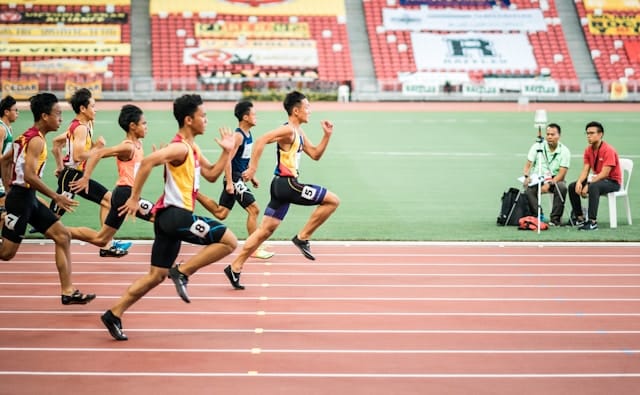How to Design Injury Prevention Programs for Adolescent Athletes in High-Risk Sports?

Hello, coaches, trainers, and all dedicated to the well-being of young athletes! Today we will delve into a topic of great relevance and paramount importance for all of you involved in the sports scene focusing on adolescents. We are talking about injury prevention programs and, more specifically, how to design these initiatives for adolescent athletes participating in high-risk sports. With the right strategies and a careful approach, it’s possible to greatly reduce the risk of injury for these young athletes.
Understanding the Unique Needs of Adolescent Athletes
Before we start designing an injury prevention program, it’s crucial to comprehend the unique needs of adolescent athletes. We need to understand that these young individuals are not simply smaller versions of adult athletes. They have specific physiological, psychological, and developmental characteristics that require particular attention.
En parallèle : What Are the Best Approaches to Building Mental Toughness in Endurance Sports?
Youth athletes are in a phase of rapid growth and development. Their bodies are constantly changing, and this can lead to imbalances in strength, flexibility, and coordination. Additionally, the growth plates in their bones are not yet fully developed, making them more susceptible to certain types of injuries.
Moreover, they’re still learning about their bodies and how to control their movements efficiently. They may not yet have the same level of skill, strength, or experience as adult athletes, which can increase the risk of injury if they’re pushed too hard or too quickly in their training.
Cela peut vous intéresser : How Can Augmented Feedback Systems Improve Technique in Precision Sports like Archery?
Recognizing High-Risk Sports and Associated Injuries
Identifying which sports are considered high-risk is an essential part of designing an effective injury prevention program. Typically, high-risk sports are those that involve significant physical contact, frequent jumping or twisting movements, or a high degree of speed or strength. This includes sports like American football, hockey, gymnastics, basketball, soccer, and even cheerleading.
Each of these sports carries its own specific risk of injury. For instance, American football and hockey often result in concussions, while gymnastics and cheerleading frequently lead to injuries to the knees, ankles, and wrists due to the high impact of tumbling and landing. Soccer and basketball regularly cause ankle sprains and knee injuries like ACL tears.
Understanding these risks can help us identify the areas we need to focus on in our injury prevention efforts. Once we’ve identified the most common injuries in a given sport, we can start to devise strategies to prevent them.
Implementing a Well-Rounded Approach to Injury Prevention
An effective injury prevention program for adolescent athletes in high-risk should be multifaceted, including components like proper training techniques, sufficient rest and recovery, and a focus on overall physical health and wellbeing. Remember, our goal is to create a well-rounded program that can proactively address the risks these athletes face.
A substantial part of injury prevention involves teaching the athletes appropriate training techniques and ensuring they’re using them consistently. This includes proper form during exercises and drills, suitable warm-up and cool-down routines, and teaching them how to listen to their bodies to avoid overexertion.
Including regular rest and recovery periods in the training schedule is also crucial. Overtraining can lead to fatigue, decreased performance, and increased risk of injury. By scheduling regular rest days and encouraging proper sleep and nutrition, we can help these young athletes keep their bodies in optimal condition.
Emphasizing the Role of Education in Injury Prevention
Education plays a pivotal role in injury prevention. By teaching young athletes about the risks associated with their sport, the importance of proper training techniques, and the value of rest and recovery, we can empower them to take an active role in preventing injuries.
Start by educating the athletes about the most common injuries in their sport and what they can do to prevent them. This might involve teaching them specific exercises to strengthen vulnerable muscles, demonstrating proper form during drills and games, or showing them how to use protective equipment correctly.
Next, reinforce the importance of rest and recovery. Explain how overtraining can lead to injuries and emphasize the importance of taking scheduled rest days seriously. Discuss the importance of proper nutrition and hydration, as well as the role of sleep in recovery and performance.
Lastly, foster an open and supportive environment where athletes feel comfortable discussing any concerns or issues. Remember, an educated athlete is an empowered athlete, one who can play a significant role in preventing injuries before they occur.
Incorporating Regular Screening and Evaluations
Regular screening and evaluations are an integral part of any injury prevention program. These assessments can help identify potential issues before they become serious problems, allowing for early intervention and prevention.
For adolescent athletes in high-risk sports, these evaluations should include a comprehensive physical examination, functional movement screening, and regular check-ups throughout the season. These assessments can help identify any physical imbalances or weaknesses that could lead to injury, as well as monitor the athlete’s progress and adjust their training program as necessary.
In addition to these scheduled evaluations, it’s also essential to encourage athletes to speak up if they’re experiencing any pain or discomfort. Early detection and treatment of injuries can significantly reduce recovery time and prevent further complications. Therefore, fostering an environment where athletes feel comfortable voicing their concerns is crucial.
Remember: protecting our young athletes from injury isn’t just about keeping them in the game; it’s about ensuring their long-term health and wellbeing. By designing and implementing comprehensive injury prevention programs, we can do just that. After all, a safe athlete is a successful athlete.
Integrating Psychological Well-being into Injury Prevention
In addition to the crucial physical aspects of injury prevention, the psychological well-being of adolescent athletes should not be overlooked. Emotional health and cognitive processes are essential factors to consider when designing injury prevention programs for high-risk sports.
Why is this significant? Sports pose not just physical, but also mental challenges to the athlete. Stress, anxiety, and fear can all increase the likelihood of injuries in sports. For instance, an athlete who is anxious about a challenging jump might tense up or execute the move improperly, leading to an injury. In contrast, an athlete who is confident and calm is more likely to perform the move correctly and safely.
Effective injury prevention programs should, therefore, include strategies to manage stress and promote mental well-being. This could include counseling services, stress management workshops, and mindfulness practices. Implementing these interventions can equip the athletes with the necessary tools to handle the psychological pressures they encounter, thereby reducing the risk of injury.
Furthermore, we need to establish an open and supportive environment where athletes feel comfortable discussing their fears and anxieties. It is essential to encourage open communication between coaches, athletes, and parents, to address any mental health concerns promptly and effectively. Remember, mental preparation is just as vital as physical readiness in preventing injuries among adolescent athletes.
Fostering a Culture of Safety in High-Risk Sports
One of the most effective strategies for preventing injuries in high-risk sports is to foster a culture of safety. This means creating an environment where safety is valued, prioritized, and practiced by everyone involved, from the athletes to the coaches, parents, and even spectators.
A culture of safety in sports starts with the leadership. Coaches and team organizers must consistently emphasize the importance of safety and take proactive steps to prevent injuries. They can do this by maintaining a high standard of safety in training sessions and competitions, setting clear safety expectations, and modeling safe behaviors.
Moreover, athletes themselves should be encouraged to take ownership of their safety. This includes following safety rules, using protective equipment correctly, and speaking up when they see unsafe behaviors or conditions. Peer influence can be a powerful driver of behavior in adolescents, so cultivating a group norm of safety can be particularly effective in high-risk sports.
Parents and spectators also play a role in fostering a culture of safety. They should be encouraged to support safety measures and to model positive attitudes towards safety. After all, a culture of safety in sports isn’t just about preventing injuries; it’s about promoting a healthy and positive sports experience for all.
By integrating these critical components into our injury prevention programs, we can significantly reduce the risk of injuries in adolescent athletes involved in high-risk sports. Safety should be the rule, not the exception, in the sporting world.
Conclusion
Designing injury prevention programs for adolescent athletes in high-risk sports is a comprehensive process. It requires understanding the unique physiological and psychological needs of these young athletes, recognizing the injury risks associated with each sport, and implementing a well-rounded approach that emphasizes proper training, education, regular evaluations, mental well-being, and a culture of safety.
Remember, the goal is to equip our young athletes with the tools and knowledge they need to prevent injuries and stay safe. By doing so, we’re not just helping them maintain their performance, but we’re also fostering their overall health and well-being. Let’s strive to make sports a safer place for our adolescent athletes, because a healthy athlete today is a champion tomorrow.
